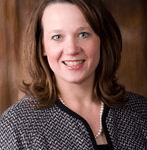Ten Ways that Competency-Based Education is the same in K-12 & Higher Education
CompetencyWorks Blog

Last June, I had the chance to co-present on competency-based education (CBE) with Charla Long, dean of Lipscomb University. Lipscomb is nationally recognized for its pioneering work in competency-based higher education, and Charla has been the star of that work. In our presentation, we each shared about the opportunities and challenges that we have faced building and running competency-based programs – her in higher education and me in K-12.
Charla and I did not talk about our presentation with each other beforehand. So, we were both amazed when almost 50 similarities emerged between her experience and my own.
Here are just 10 of the nearly 50 ways that we found our CBE experiences in K-12 and higher education to be the same:
Opportunities
- We find that CBE permits us to focus on student learning and outcomes and operate from the belief that CBE is the best way to equip students with the skills they need personally and professionally.
- We find that the CBE experience works best when it is customized and personalized around student needs, interests and future plans.
- We have seen key technologies (like blended and online learning programs) help actualize and enhance CBE, but we do think that CBE can exist without these technologies.
- We have come to believe that CBE is a better way to organize schooling and learning and that it addresses both “excellence” and “equity” issues, in part by providing a quality education to all students, even those who struggle in traditional schools.
- We have watched our teachers’ roles and responsibilities change in the CBE model — they become less instructor and more coach, mentor and facilitator; they take a more hands-on approach and spend lots of time modifying instruction and content based on who their students are and what those students need.
Challenges
- Our relationship status with the Carnegie Unit or time-based credits is complicated. We know it is unhealthy but breaking it off completely seems costly and maybe even unrealistic if a new measure of learning cannot be identified and universally embraced.
- We can speak with great clarity and conviction about our experience with CBE but struggle to speak in simple and clear terms about the field more broadly.
- We worry that there are no clear quality institutional or practice standards.
- We know that individual institutions often work in isolation, craving community and support – we have experienced this firsthand.
- We have identified an ambitious amount of policy changes and political will – at both the state and federal level – needed to spread and scale our work.
These 10 points framed my experience as a CBE practitioner. Important and difficult topics like the role of the educator, policy and using technology emerge and have to be handled while the work is being built and in motion. The next few blog entries that I write about competency-based higher education will tackle these broad issues and, whenever possible, pull in our colleagues’ voices at the other end of the education continuum.
If you have specific questions and interests about what is happening in competency-based higher education or strong feelings about what should be covered first, send me a note at [email protected] or to my Twitter account: @stephanie_malia.
Stephanie Malia Krauss is a Senior Fellow at The Forum For Youth Investment focusing on issues of youth readiness and competency-based education. She was previously President and chief executive officer of Shearwater Education Foundation.